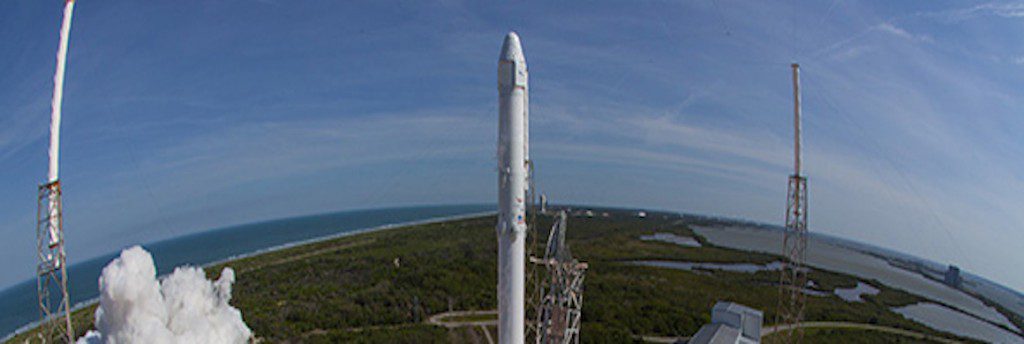MIT Sloan Hosts Private Space Industry Conference

MIT Sloan published an article this week about the school’s recent New Space Age Conference, which hosted “scientists, investors, and academics” to discuss the private space industry following SpaceX’s landmark landing on April 8th.
Richard Rocket, co-founder and CEO of New Space Global, “a research and analysis firm tracking the space industry,” spoke candidly about the promising financial reality of commercial space travel. But Rocket urged investors outside the Musks and Bezos of the world to invest in new launch companies, lest the need to “get people and projects into space” outpaces “the number of launches.”
The article points out that Boeing and NASA are working together to engineer longer, lower-cost space trips by building “a composite cryogenic fuel tank that will reduce the weight and cost of tanks on space vehicles.” Boeing’s Naveed Hussain said his company is “using proprietary materials that will not suffer even the smallest crack” in order to make the tank “space-qualified.”
If you guessed that the colonization of Mars was a key talking point at the New Space Age Conference, you would be correct. Keegan Kirkpatrick, who leads RedWorks, a design team that put together a 3-D printed Martian dwelling as part of a NASA challenge, discussed the various challenges and logistics associated with terraforming—“the modification of a planet to make it habitable.”
Kirkpatrick said “evidence of large lava tubes and underground caves on Mars suggests valley-sized spaces that would be easier to colonize than the planet’s barren and inhospitable surface.”
Andrew Owens, a PhD student and NASA space technology research fellow at MIT, countered: “Wouldn’t it be easier to change ourselves than it would be to change an entire planet?”
Questions abounded regarding interplanetary transportation of essential resources—namely, water, building materials, and fuel. Planetary Resources VP Akshay Patel believes that asteroid mining may offer a more efficient solution than an interplanetary fleet of Earth-to-Mars trucks.
Patel said Planetary Resources “sees the 10,000 near-Earth asteroids as “low-hanging fruit” for the extraction of industrial metals and rare earth metals” by initially using “in-house software, sensors, propulsion, and laser communications [to] approach and analyze asteroids.” The company’s long-term strategy is to “use materials from pulverized meteorites to 3-D print structures in space and create fuel depots for spacecraft.”
Diversity was also a major talking point at the conference. According to the article, only “553 people have ever been to space.” Roughly 90% of whom were American men between the ages of 25-40 from a uniform socioeconomic background.
Space tourism company Virgin Galactic “plans to offer suborbital trips into space” for a quarter-million per trip—less than the cost of a new Bugatti. According to Virgin Galactic’s VP of special projects Will Pomerantz, “Customers will be able to float freely around a spaceship cabin and look back at the curvature of Earth.”
He adds, “I’m only exaggerating a very, very little bit when I say if you’re healthy enough to ride a roller coaster, you’re healthy enough to go into space.”
